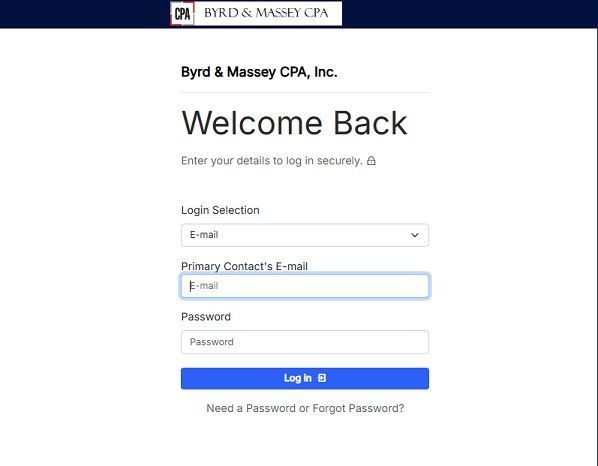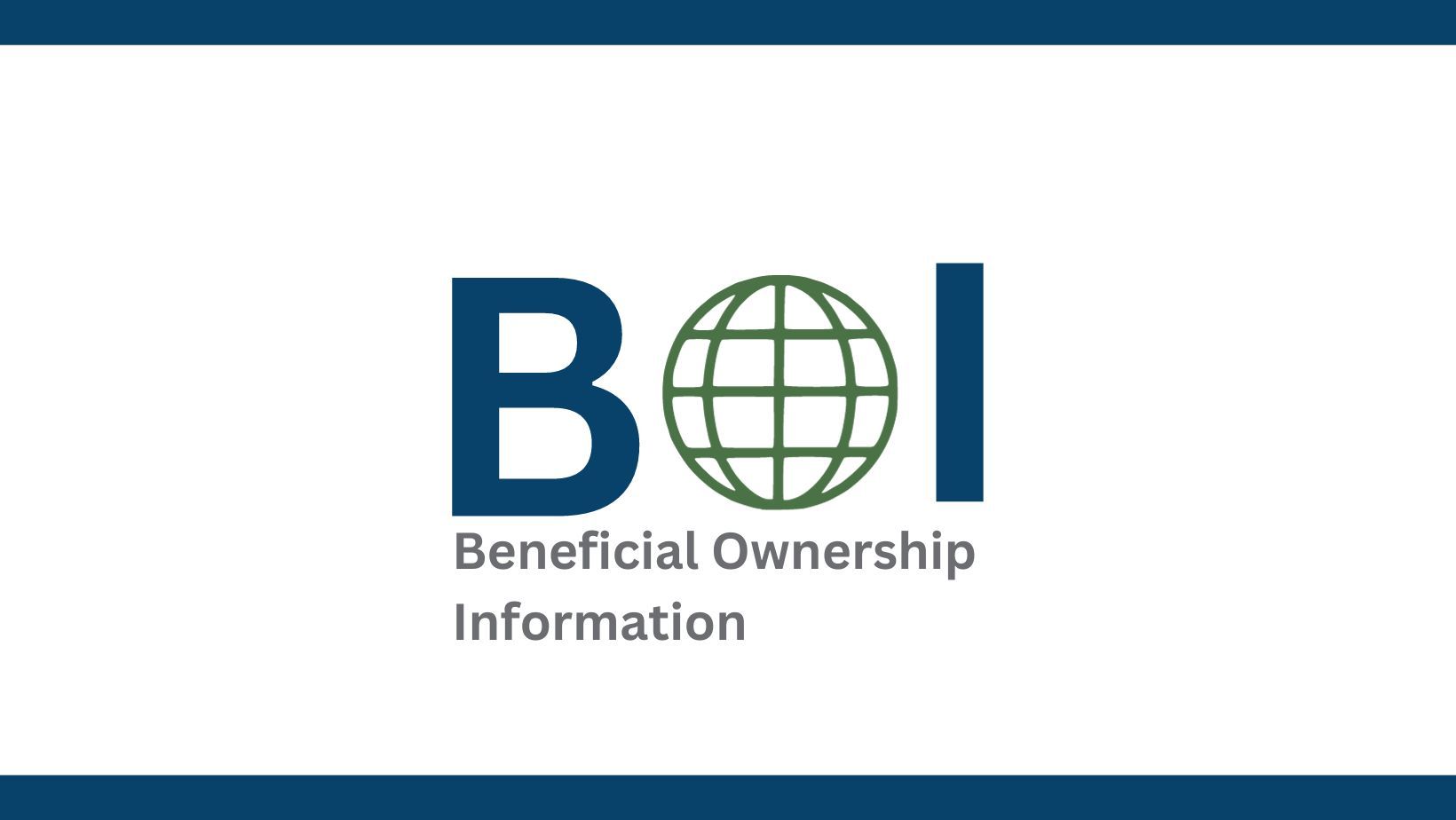Tracking Expenses
Amber Dicken • July 30, 2019
Do you use a shoe box to track your personal or business expenses? Don’t spend hours sorting and summarizing receipts for your tax return. There is a safer, faster and easier way!

A new tax law — often referred to as the Big Beautiful Bill — has officially passed, bringing several important updates for individuals, families, homeowners, and small business owners. To make everything easy to understand, we’re launching a 10-part series highlighting the most important changes and how they may affect your taxes in 2025 and beyond. Here’s a quick overview of what the series will cover: 1. Standard Deduction Is Staying Higher The increased standard deduction will not drop in 2026. 2. Lower Tax Brackets Are Staying in Place Current tax brackets and lower rates are now permanent. 3. Child Tax Credit Increase Families may see a higher credit per child. 4. New Overtime Pay Deduction (2025–2028) A new deduction for qualified overtime income, even with the standard deduction. 5. New Tip-Income Deduction Tip earners can deduct taxable tip income (2025–2028). 6. Car-Loan Interest Deduction (U.S.-Assembled Cars Only) Interest on qualifying auto loans becomes deductible for 2025–2028. 7. SALT Deduction Cap Increase The cap rises dramatically from $10,000 to $40,000, with phaseouts (2025–2029). 8. New Deduction for Seniors 65+ Older taxpayers receive an additional deduction through 2028. 9. Continued Small Business & Self-Employed Benefits QBI stays, bonus depreciation continues, and write-off opportunities remain. 10. Smart 2025 (and beyond) Tax-Planning Tips Practical steps to make the most of the new changes. We’ll be publishing each of these posts individually on Instagram and Facebook so you can maximize every deduction and credit available. Stay tuned — there’s a lot of good news to share! With so many tax changes on the horizon, knowledge truly is power. Stay tuned as we unpack each update in our upcoming series — small insights now can lead to smarter decisions all year long.

There are two types of educational credits to help students in their continuous pursuit of knowledge: The American Opportunity Tax Credit (AOTC) and the Lifetime Learning Credit (LLC). Understanding both is important if you attend college or have kids who do because it can greatly help with your tax bill. American Opportunity Tax Credit (AOTC) This undergraduate tax credit is a partially refundable credit that is good for the first four years in college and assists with students’ expenses such as qualified tuition expenses, school fees, and course materials. You can claim up to $2500 PER student each year; however, your modified adjusted gross income is a factor when claiming this credit. See the numbers below: Based on Modified Adjusted Gross Income (To claim FULL credit) Individual - $80,000 or less Married Filing Jointly - $160,000 Based on Modified Adjusted Gross Income (To claim REDUCED credit) Individual - Less than $90,000 Married Filing Jointly - Less than $180,000 To claim the AOTC credit, you will need the following: A TIN or Social Security Number A 1098-T (or tuition statement) from an eligible educational institution* Be pursuing a degree or other recognized education credential Be enrolled at least half time for at least one academic period beginning in the tax year Not have claimed the AOTC or the former Hope credit for more than four tax years Not have a felony drug conviction at the end of the tax year *Note: If you were not issued a 1098-T, you may still be able to claim the credit by showing proof of payment to the eligible educational institution attended. Lifetime Learning Credit (LLC) This tax credit is for undergraduate, graduate, and professional studies which includes any courses you take to improve job skills. The LLC is exactly that, for a lifetime. The credit never runs out if you are enrolled and taking courses from an eligible educational institution. You, your spouse, or dependent can receive a $2,000 tax credit every tax year. Based on Modified Adjusted Gross Income (To claim $2000 tax credit) Individual - Less than $90,000 Married Filing Jointly - Less than $180,000 To claim the LLC, you need: A 1098-T (or tuition statement) from an eligible educational institution Cannot also claim the AOTC If you do not receive a 1098-T, provide receipts of tuition and other approved expenses, such as course materials. Student Loans If you are one of millions of taxpayers with student loans, then you are already familiar with form 1098-E. Be sure to keep an eye out for yours. Student loan servicers will be sending notifications out this month. Hoping for help with the burden of student loans? There’s an interest deduction for that! According to the IRS, you may deduct the “lesser of $2500 that you paid throughout the previous year OR the amount of interest you actually paid during the year.” The amount phases out when you reach the annual limit for your filing status. For more information on educational and student loan credits click here and if you would like to see the format of the tax form for each credit, visit this link here . As always, we are here to help navigate the ins and outs of tax season. Send your questions to us via your client portal by clicking here to log in. We are happy to help and remember, we’re easy to talk to!

We are thrilled to introduce you to your new client portal: ATOM This innovative platform represents a significant step forward in how we interact with our clients, offering several features designed to enhance communication and overall user experience. With ATOM, you will have access to the following: Schedule an appointment Get updates on the status on your tax return Upload and download documents to and from our office Secure messaging functionality In the main menu, clients will see a range of features which include: Viewing upcoming appointments Documents requiring e-signatures, and Messages sent from our CPAs and staff Once you have thoroughly reviewed your information and are confident you have no changes this tax season, simply upload your tax documents and any tax questions you have, and we will begin processing your tax return. Our commitment to excellence means that we will diligently review, verify, and process your information in a timely manner. If you would like to sign up for the client portal, please call 479-876-5599 If you have a portal, but are logging into ATOM for the first time, please follow these instructions: Click here Under Login Selection, please select E-mail from the drop-down menu Enter the E-mail address associated with your account ( primary taxpayer ) Password ( this will be given to you via portal instructions through email or phone ) Click the “Log In” button Should you have any questions, send us a message or give us a call. Remember, we're easy to talk to and we are happy to help!

The Corporate Transparency Act (CTA) went into effect on January 1, 2024. As a result, non-exempt companies (almost all closely held businesses, including LLCs, corporations, and limited partnerships) that are registered to do business within any state in the US (reporting companies) are required to file initial and updated reports (BOI Report) to the US Treasury Department’s Financial Crimes Enforcement Network (FinCEN) about their beneficial owners and company applicant. A “beneficial owner” is an individual who either controls 25% of the ownership interests, or directly or indirectly exercises substantial control over the reporting company. Non-owners (such as managers, officers, directors, etc.) can also be beneficial owners for purposes of the CTA. A “company applicant” is a person responsible for the reporting company’s initial formation or registration. There are 23 types of entities that are exempt from filing BOI reports; however, most entities will not be exempt. For reporting companies formed prior to January 1, 2024, the initial BOI reports are due by January 1, 2025. For reporting companies formed on or after January 1, 2024, and before January 1, 2025, the initial BOI reports are due within 90 days of formation. For reporting companies formed on or after January 1, 2025, the initial BOI reports are due within 30 days of formation. An updated BOI report MUST be filed within 30 days for any changes in the information given about the reporting company or its beneficial owners. For additional information, here is a link to the website for filing. In general, the following information is required to be included to be in the BOI report: Reporting Company Full legal name Any trade or doing business as (dba) name Address for principal place of business in the US Jurisdiction of formation/registration Taxpayer identification number (TIN) Beneficial Owners & Company Applicants Full legal name Date of birth Unique identifying number (i.e. driver's license or passport) Current address Image of the identifying document Failure to comply with the CTA can result in a civil penalty of $500 per violation per day, and a criminal fine and/or imprisonment of up to 2 years. Because the consequences of failing to report are significant, we are alerting you so that you may take whatever action is necessary to comply based on your unique circumstances. PLEASE NOTE: For purposes of clarification, Byrd and Massey will NOT be filing any BOI reports with FinCEN at this time.

Birth Year Acknowledgement If you were born in 1950 or earlier, you should have already started taking your Required Minimum Distributions (RMDs). For those born between 1951 and 1959, you have a bit more time. You can wait until April 1st of the year after you turn 73 to begin taking your RMDs. Those born in 1960 or later will have until April 1 st of the year after turning 75. It's crucial to stay informed and compliant with these regulations to avoid any unnecessary penalties. If you have any questions or need assistance, consult with your financial advisor to ensure you're on the right track. Subsequent RMDs After taking your first RMD, all future RMDs must be taken by December 31 st of each year. If you delay your first RMD until April 1 st of the following year, you will need to take TWO distributions in that year, one by April 1 st and the other by December 31 st . This can have significant tax implications. To ensure you make the best financial decisions, we strongly recommend discussing your RMD strategy with a financial advisor . Stay informed and plan ahead! First RMD Deadline for IRAs If you turned 73 in 2024, a first RMD must be taken by April 1, 2025. This applies to ALL types of IRAs, including SEP and SIMPLE IRAs; however, Roth IRAs are an exception. Roth IRA owners are not required to take RMDs during their lifetime . First RMD Deadline for 401(k) and Other Defined Contribution Plans If you are still working and do not own more than 5% of the company sponsoring your retirement plan, you may be able to delay your first RMD until after retirement. This exception applies exclusively to workplace retirement plans and does not extend to IRAs, SEP IRAs, or SIMPLE IRAs. To discuss tax planning strategies, you can book an advisory appointment online or by giving us a call at 479-876-5599. We are happy to help!

If you have recently married, purchased a home, or had a baby, you are likely aware of the significant life adjustments such milestones present! But you may not realize that major life changes usually have tax implications associated with them. Here are a few things to consider when major life events happen: Getting Married -- What is the best filing status for our financial situation? Should we update our withholding? Buying a House – Do I get a tax break when I buy a house? Having a Baby – Will I be eligible for the child tax credit? Changing Jobs – I’m making more money. Should I bump up my withholding? Sending Kids to College – Can I claim tax credits and deductions for the education-related expenses I paid for my child? Does it make more sense for my child to take the credits? Going Through a Divorce – What filing status do I qualify for after a divorce? Getting Ready to Retire – Should I be concerned about the tax implications of required minimum distributions? Will I pay taxes on my Social Security benefits? If you are a Returning Tax Client , the above questions can be addressed via a note enclosed with your tax organizer and documents, and your CPA will review and acknowledge it accordingly. If you are new to the firm, a sit-down meeting is required so a CPA can understand your previous year and current tax situation moving forward. There is no fee for this meeting; however, should you need to discuss tax planning in a more detailed manner, you can schedule an advisory appointment online or give us a call at 479-876-5599. As always, we are here to help and we're easy to talk to!

Thinking about going green with a new plug-in electric vehicle (EV) or fuel cell vehicle (FCV)? You might qualify for a clean vehicle tax credit of up to $7,500! If you place your new EV or FCV in service in 2023 or later, ensure the seller provides information about the vehicle's qualifications AND reports it to the IRS. Without this, your vehicle will not be eligible for the credit. Eligibility requirements include: - Buying the vehicle for personal use, not resale - Using it primarily in the U.S. - Meeting specific income thresholds -$300,000 for married couples filing jointly (or a surviving spouse) -$225,000 for heads of households -$150,000 for all other filers For vehicles placed in service from April 18, 2023, additional critical mineral and battery component requirements apply and can be found here . To claim the credit, you will need to file Form 8936 with your tax return. Please be sure to get a time-of-sale report from the dealer. **Please note that as of January 1, 2024, Clean Vehicle Tax Credits MUST be initiated & approved AT THE TIME OF SALE. For more information on purchasing clean vehicles and the clean vehicle tax credit, visit the following IRS websites: Credits for NEW Clean Vehicles Purchased in or After 2023 Transferring Clean Vehicle Tax Credits How to Claim a Clean Vehicle Tax Credit Drive green and save green!

With the end of the year approaching fast, we wanted to share a few important considerations when it comes to employees and retirement. Max Out Your Contributions The limit for 2024 is $23,000 for those under 50 and $30,500 for those 50 and up. If you haven’t reached this limit yet, consider increasing your contributions through the end of the year. Adjust Payroll Deductions If you find that you need to contribute more, adjust your payroll deductions. Check with your HR department to ensure the changes are made ON TIME. Assess Investment Allocations Review your current investment allocations to ensure they align with your retirement goals. Rebalance if necessary. Maximize Employer Match Make sure you are contributing enough to get the full employer match. Review and Update Beneficiaries Be sure your beneficiary designations are current and reflect any life changes, such as marriage, divorce, or the birth of a child. Plan for Required Minimum Distributions (RMDs) If you are 73 or order, you NEED to be taking RMDs from your 401(k). Missing an RMD can result in hefty penalties. Be sure you know how much you need to withdraw to meet the minimum RMD requirement. Tax season is right around the corner, so be sure to make any changes you feel are necessary, now. If you have questions about tax planning, we offer advisory services which can be booked online HERE or by calling us at 479-876-5599.

The Child and Dependent Care Credit is a tax benefit for parents or guardians who acquire expenses while caring for a child or dependent. Did You Know? The Child & Dependent Care Credit is not just for children? It can also be applied to other dependents; for example, a parent, or disabled spouse who lives with you and requires care. There are a few key elements to qualify for the credit. Eligibility requirements are below: If you are caring for qualifying individual(s): The credit applies to children under the age of 13 or dependents – of any age – who are physically or mentally incapable of self-care and have lived with you for more than half of the year. You – and your spouse, if filing jointly – must be employed or actively seeking employment. The credit is aimed at those who need childcare to work or find work. You may also be eligible if your spouse is disabled or a student. There is no income limit for the credit; however, the credit you receive and the maximum amount of expenses eligible for the credit decreases as your income increases. Most filing statuses qualify, but if you are filing Married Filing Separate , you will not be eligible to claim this credit. You must provide the TIN (usually the Social Security Number) of each qualifying individual. -Qualifying Expenses & Claiming the Credit- Expenses that qualify are daycare, preschool, and day camp, and may be provided in the household or outside of the household. It does not cover expenses such as private school tuition, overnight camps, or care provided by a spouse, the parent of your qualifying individual, your child under the age of 19, or a dependent whom you or your spouse may claim on your tax return. There is a limit to the total amount you can use to calculate the Child and Dependent Care Credit. You can claim up to $3,000 for one qualifying individual or up to $6,000 for two or more qualifying individuals; however, if you received any dependent care benefits that you exclude or deduct from your income, you must subtract the amount of those benefits from the dollar amount that applies to you. For more information click here . To claim this credit, you will need to complete Form 2441 and attach it to your tax return (which we can do for you). :) Please note that we will need information about the care provider, including their name, address, and taxpayer identification number (TIN), as well as the total amount paid to the provider during the year. Most facilities will provide families with a document at the beginning of the new year. Reach out to your care facility to request this document if you have not received one in an appropriate amount of time. If you have questions about the credit, please let us know or include a note when you drop off or upload your tax documents this upcoming tax season. We’re here to help anyway we can!







